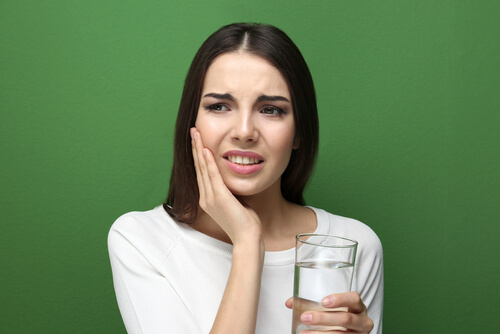Tooth Pain After Cleaning

Tooth pain after a dental cleaning can be an unsettling experience, leaving many to wonder if the discomfort is a normal part of the process or an indication of a more serious issue. Dental cleanings, also known as prophylaxis, are routine procedures designed to remove plaque, tartar, and stains from teeth, both above and below the gum line. While these procedures are generally safe and essential for maintaining oral health, they can occasionally lead to temporary discomfort or pain, especially if you have sensitive teeth or gums.
Understanding the Causes
There are several reasons why you might experience tooth pain after a dental cleaning. One of the most common causes is the use of ultrasonic scalers. These devices use high-frequency vibrations and water flow to remove tartar and plaque efficiently. However, the process can sometimes cause minor irritation to the gums, especially if they are already sensitive or if the procedure is done too aggressively. Additionally, the cleaning process might expose dentin, the layer of tissue beneath the enamel, which can lead to sensitivity if the dentin tubules are open.
Another potential cause of pain is the application of a fluoride treatment after the cleaning. While fluoride is beneficial for preventing decay and strengthening tooth enamel, some people might experience a temporary stinging sensation, especially if they have mouth sores or sensitive gums.
It’s Not Just the Cleaning
It’s also possible that the pain you’re experiencing has little to do with the cleaning itself but is instead a sign of an underlying issue that was simply made more noticeable by the cleaning. For example, if you have a cavity, a cracked tooth, or gum disease, the cleaning process might irritate these conditions, leading to pain.
Addressing Tooth Pain
If you’re experiencing tooth pain after a dental cleaning, there are several steps you can take. First, it’s essential to communicate with your dentist. They can evaluate your teeth and gums to determine the cause of the pain and recommend appropriate treatment. In many cases, the pain is temporary and can be managed with over-the-counter pain relievers or desensitizing toothpaste.
For those with sensitive teeth, using a soft-bristled toothbrush and a fluoride toothpaste designed for sensitivity can help. Avoiding extreme temperatures in foods and drinks can also reduce discomfort. If the pain persists or is severe, it may be necessary to revisit your dentist for further evaluation and treatment.
Prevention is Key
Preventing tooth pain after a dental cleaning involves maintaining good oral hygiene practices. Regular brushing and flossing can help reduce plaque buildup and prevent tartar formation, making dental cleanings less invasive and potentially less painful. Additionally, attending regular dental check-ups can help identify and address issues early on, reducing the likelihood of pain during and after cleanings.
FAQs
How long does tooth pain after a dental cleaning typically last?
+Tooth pain after a dental cleaning is usually temporary and can last from a few hours to a couple of days. However, if the pain persists or worsens, it's crucial to consult with your dentist to rule out any underlying conditions that may need medical attention.
Can tooth pain after a cleaning be a sign of a more serious issue?
+Yes, in some cases, tooth pain after a dental cleaning can be an indication of a more serious issue such as a cavity, gum disease, or a cracked tooth. It's essential to discuss any persistent or severe pain with your dentist to determine the cause and appropriate treatment.
How can I reduce the risk of experiencing tooth pain after a dental cleaning?
+Regularly practicing good oral hygiene, attending scheduled dental appointments, and informing your dentist about any sensitivity or concerns before the procedure can help minimize the risk of tooth pain after a dental cleaning.
Conclusion
Tooth pain after a dental cleaning, while not common, can occur due to various factors. Understanding the causes and taking proactive steps towards prevention can significantly reduce the likelihood and severity of such discomfort. Maintaining open communication with your dentist about any pain or sensitivity is key to ensuring that your oral health needs are met and that any underlying issues are addressed promptly. By combining regular dental care with at-home oral hygiene practices, individuals can minimize the risk of experiencing tooth pain and enjoy a healthier, more comfortable smile.


